Environmental Blendings
This gives an idea to think of inflatables not as just objects but to think of them as a part of the their surrounding
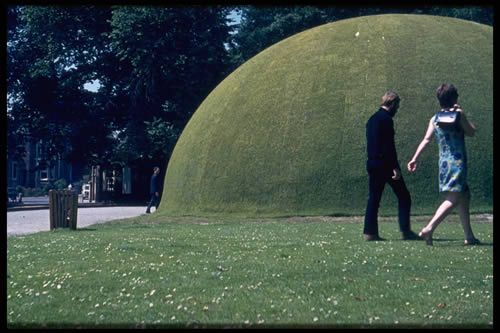
-One of the “Three Pavilions”: Theo Botschuiver and Jeffrey Shaw, 1970
source: www.jeffrey-shaw.net/
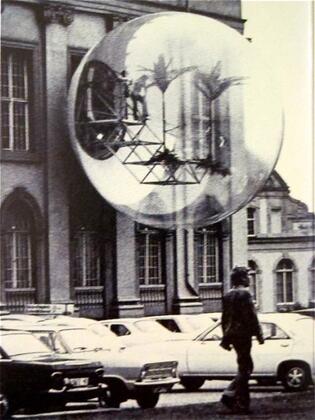
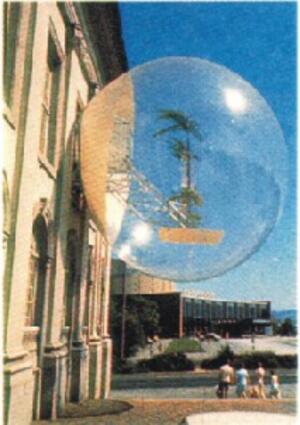
OASIS Nr.7: Haus_Rucker_Co, documenta 5, Kassel 1972
This contribution was produced in response to an invitation to the Documenta 5 in Kassel: a transparent sphere with a diameter of 8 metres was placed in front of the main facade of the Friedericianum. A catwalk made of standard tubular steel sections projected through a window from the interior of the building. A tubular steel ring was fixed to this footbridge, at a slight distance from the façade. This ring formed the external support for a PVC foil shell that formed a sphere when inflated into shape by an air pump. Internally it was the connecting element for a short tunnel made of the same material that had large zips at either end and thus functioned as a kind of airlock.
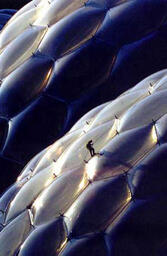

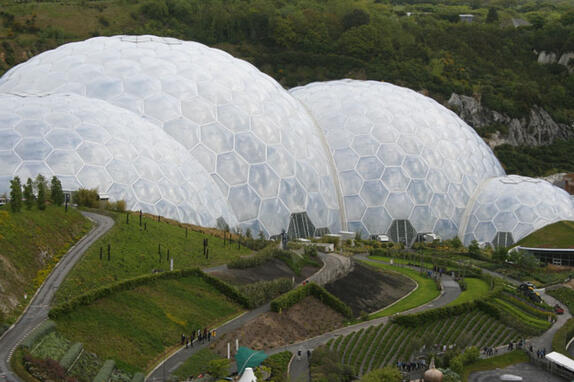
The Eden Project, Cornwall, UK
designers formed this ETFE material into extremely sturdy pillows, each made from three sheets of ETFE foil welded together along the sides, one on top of the other, with layers of air pumped in between them. The air layers provide increased insulation without decreasing the amount of sunlight that shines through. These pillows are adjustable: On a colder day, they can be pumped up with more air to provide better insulation; on a hotter day, they can be partially deflated to allow more cooling.
The total Eden structure uses 625 hexagons, 16 pentagons and 190 triangles.
The steel frame of the geodesic dome is incredibly strong relative to its weight. This weight (667 tons) is dispersed evenly throughout the entire structure so that the dome only needs support around its base, leaving lots of room for the plants inside. The edges of the dome rest on a sturdy foundation necklace, an underground concrete wall around the perimeter of the structure.
http://fotos.brambring.nl/EdenProject/IMG1884
bubbles.jpgwww.reigate.ac.uk:…:eden:eden_index.jpg
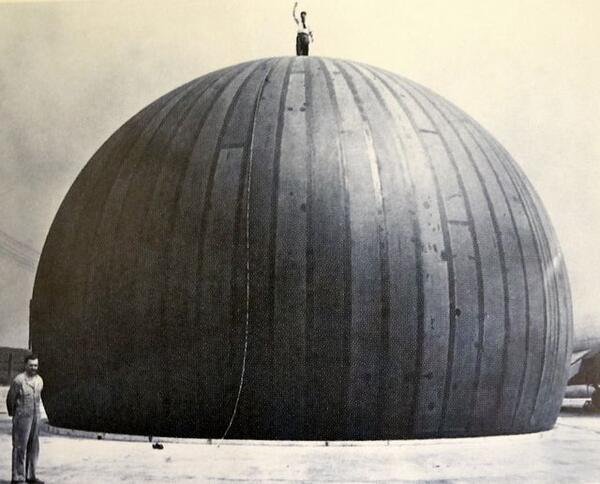
Walter W. Bird, “Radome” on the Cornell Aeronautical Laboratory Grounds in Buffalo, NY, (1948)
Bird himself, demonstrates the stability of the air supported 16.5 mter diameter shell by standing on his “Radome”.\
In 1946 the U.S. Airforce sought a solution to shelter their early warning RADAR antennas.They required a portable structure that would prevent the antennas from environmental elements that would disturp the signal as wind, rain, water, and be transparant to RADAR energy. The first air supported structure was the Cornell Aeronautical Laborratory.
http://rudygodinez.tumblr.com/post/80003877985/walter-w-bird-radome-on-the-cornell-aeronautical-laborat
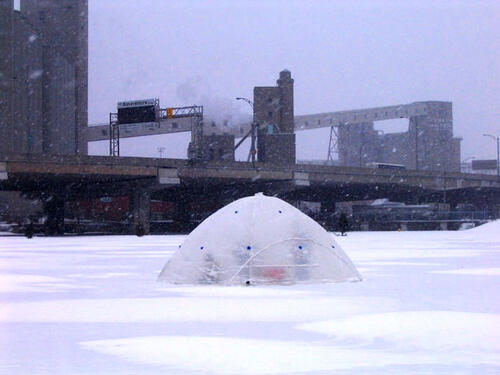
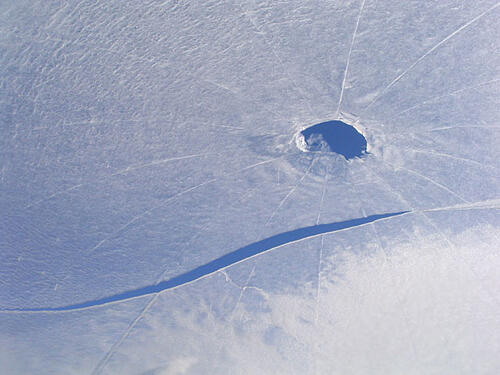
The Ice Domes, 2004-2005, Ana Rewakowicz / Steve Topping
The matrix used in the fabrication of these domes is made from an inflatable vinyl structure whose frame is composed of plastic pipes pierced all around. Once this is arranged on a frozen flat surface of water and equipped with a rechargeable battery, it is connected to a blower that inflates it with air and to a “heating” pump that collects the water under the ice and circulates it into the pipes. A fog disperses and covers the surface which, upon contact with the air (-10 to -20 degrees Celsius), is transformed into a fine film of ice in about twelve hours. Once the transparent shell stabilizes, the matrix is then deflated and reused for a new dome. Each dome has a six metre diameter and a height of roughly two metres, and the ice layer that contains their dwelling should reach a thickness of four centimetres at its base and six centimetres at its peak. The ice domes correspond with the utopia of creating nomadic and autarkical dwellings in the form of a “survival kit” adapted to our harsh climate.
source: www.rewana.com
note; one can find more experimental studies on ice shell in Asahikawa, at http://www.htokai.ac.jp/DA/kkw/iceshell/
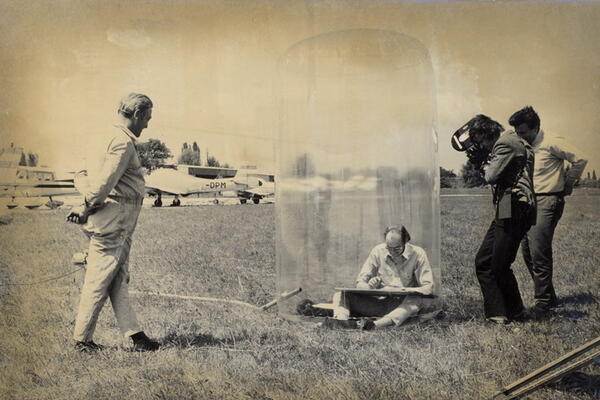
In 1969, years before mobile-communication had developed ist possibilities, Hollein proposed the inflatable mobile office, that provided take-along-workspace to blow up. In the picture you see Hans Hollein with drawing board and phone at a stop-over on the airport.<iframe width=“420” height=“315” src=“www.youtube.com/embed/RKSWEW7vYak”
more inflatable image sections: Powered by Wind - Parasite Inflatables - Soap Experiences - When Nature Inflates - Hardened Bubbles - Inflatable Spaces - Inflatable Sound - Interactive Inflatables - Inflatable Wearables - The Non Categorized Inflatables - Lighter than Air - NASA Inflatables -
or go back to: Cocky Eek